 Never judge a book by it's cover. Every picture tells a story. Which of those two old sayings resonates most with you? For us it's the second, because book covers are supposed to tell a story and there is no doubt that readers make judgements about them. So what story is your book covers telling? When readers do searches for books, or even when they are just browsing through the listings, what is the first thing they see? It is one of two things – either a book’s title or its cover. Sometimes it’s both because the title is on the cover anyway. I’m not going to talk about titles. There are too many theories about what makes a good title and, so far as we can tell, one theory is as good as another. Here’s one we found, but there are hundreds more. But the same can’t be said for covers. They have to convey so much information in a simple image and, sometimes, it’s easy for them to convey the wrong information.  Take the book on the right which was, until recently, the cover for the first book in our Magi series. We had thought it was quite a good cover, which is why we stuck with it when we signed the author. That was until we got a bit of feedback that told us we were way off track with it. Someone had emailed us asking if we would be prepared to provide a few paperback copies of one of our books for discussion by their book club. They were raising money for charity through a small attendance fee and income from tea and cake sales and, once the books had been read, they would be sold second hand, also to raise money for charity.  Happy to make our contribution, we happened to have a few spare copies of The Magi lying around the office, so I emailed her a synopsis and the cover image. We were quite taken aback when the lady replied “We are a church group and aren’t in the least bit interested in a book about BDSM. Thanks for the offer but we’ll go elsewhere.” (If you are an innocent type who is unfamiliar with the term BDSM, we don’t suggest you Google it). We were puzzled by this response, so we emailed back asking what she meant, to which she replied that with the leather clad lady on the cover, it was clearly a book of an erotic nature and that BDSM was implied.  We emailed back to assure her that the book had no erotic content at all (sorry if you are disappointed by that) and peace was restored, but the book still wasn’t accepted because, with that cover, they didn’t want to sell it on their second-hand book stall. But we had learnt a valuable lesson. The cover was designed by a previous publisher, with whom we are acquainted, and I feel certain that he had no intention of implying that the book had anything to do with BDSM. But, looking at it in light of that response from the book club, I could now see what the lady was getting at. And the image of the leather clad woman appeared on the cover of all 9 books in the series, and on the box set. It was part of the “branding” of the series.  Then there are the other two elements used on the covers. The inclusion of the image of a distant galaxy is appropriate as it’s a sci-fi book. That was also part of the series branding. The third element, however, in this case an “electronic egg” changed with each book in the series, to tie in with the plot of the book. With doubt now weighing us down, we started to wonder about that suitability of that egg image, too. What did it suggest to the readers?  So, we asked a few of our readers for their opinions. The general consensus was that it was confusing. How could you have an electronic egg? What would an electronic egg do? Why was the egg floating in space? Was it some sort of spaceship? What had the egg to do with the woman? Was that the way babies were born in the book? Well, if the cover was causing as many questions as that, it clearly wasn’t doing its job of selling the book. As it happens, the answers to the questions are contained within the book but, of course, no one was going to buy the book to find that out if they were confused about it in the first place. One thing we know is that readers don’t like to be confused before they even read the first page. In fact, it’s only the readers of crime fiction (and not all of them) that are willing to be confused by their books. 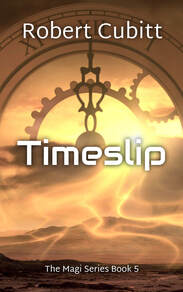 So, we decided that (a) the book’s image sent out the wrong message to some people and (b) it confused other people. Which was, perhaps, why the book and the series hadn't been doing as well as it deserved. It is rather good, as many sci-fi readers have discovered (but you would expect us to say that). So, we set out to create 9 new book covers that presented a less confusing message. In fact, all we wanted the images to say was “this is a sci-fi book”. One or two of them do hint at the content, the ones for “Cloning Around” (Book 4) and “Timeslip” (Book 5 – image to the left), but the others are a little bit more generic.  If they say anything it’s “This is sci-fi and weird stuff will happen”. (BTW, you can find out more about the books shown on our "Books" page or by clicking on the images) So, what does your cover say about your book? Does it give out an unintentional message, the way ours sent out a BDSM message? Does it confuse the reader? Is it different enough to make it stand out from the crowd? Because that third question is also important. When readers do a search by genre, they get presented with list after list of books, which they then scroll through. The cover of your book has to stand out from the crowd if you want the reader to click on it and find out more. If the cover looks too similar to the ones above and below it, the reader’s eyes are going to slide right past. Yes, do be bold, be different; but make sure that the key message about your book is plainly understood from its cover image. If you have enjoyed this blog, or found it informative, then make sure you don’t miss future editions. Just click on the button below to sign up for our newsletter. We’ll even send you a free ebook for doing so.
0 Comments
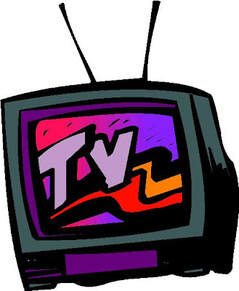 Big businesses spend a lot of money on advertising. I think we all know that. They spend it because it works, otherwise they wouldn’t do it. One of the reasons they spend so much on advertising is because they keep launching new advertising campaigns. They will run a campaign for a few weeks or maybe a few months, then they’ll stop for a while. Then they’ll start a brand new campaign with different ads. The ads may be similar, using the same characters or the same voices, but they will look different. The characters will be in a new setting, or the voices will be fronted by new images. But it’s the same product that is being advertised. So why go to the expense of re-making ads so often? Why not just continue using the same campaign all the time?  It’s because we, the public, get used to seeing an ad, so after a while we don’t pay it any attention. We need something fresh to make us watch the ad and hear the message once more. It’s a bit like teenagers being told to tidy their rooms by their parents. If you thought that your teenager isn’t listening anymore, you are probably right. They’ve heard it so many times, they’ve “tuned out” the message. And we all do it. Which is why advertisers spend so much money trying to attract our attention again by making new adverts. So, what has this got to do with Indie authors? you may ask. I’m so glad you did. "But that will stop working after a few weeks." Indie authors spend a lot of their time using social media to promote their books. It’s free unless you use the paid advertising facilities. The most common way to use it to promote work is to post a bit of blurb and a link to where the reader can find out more. The link then pulls the cover image through from the retail site so it can be seen on the social media site. That’s fine if you don’t want to pay for advertising. But that will stop working after a few weeks. Like adverts for big businesses, people will soon “tune out” your advert because once they’ve seen the cover, it is too familiar to bother with. They either bought the book several weeks ago, in which case they aren’t going to buy it again, or they are going to scroll past it. So, the indie author has to do what the big businesses do. They have to “refresh” the message. How can you, as an indie author, do that? Well, the image is the first thing to look at. Are you relying on the link in the post to reproduce the book’s cover from the sales page on Amazon, or another retailing site? If you are, then you can’t change the image unless you change the actual cover. But, actually, you can. 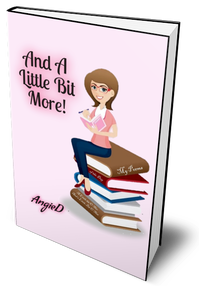 You can upload a new image into your Facebook, Twitter, Insta, etc post. That way it will take priority over the link to the sales page and will be the image that is seen. The link is still there for people to click on, but the image you use can be changed in multiple ways to keep the message fresh. It also has the advantage that you can be more creative with the image and do things that a simple link to Amazon (or whatever) can never do. You can create 3D images of your book’s cover.  You can overlay the 3D image onto an atmospheric background, along with some text. If the book is part of a series, you can show two or three covers side by side in a single image. You can change the orientation of the image to make it more suitable for viewing on a phone or tablet. Ultimately, you can create a “trailer” for your book, using video imagery alongside your book’s cover. That is really eye catching. By now, some of you will be asking “How can I, an impoverished author, create those sorts of images?” Well, if you can use PowerPoint you can do some of that. You can even make videos if you download free apps like “Moviemaker”, which can join together images created in PowerPoint, accompanied by a narration, text or music. If you want to invest in some software to help you, there is Photoshop, Canva and one we reviewed a couple of weeks ago, called Book Brush, which specialises in creating those sorts of images for authors. There are probably other packages available, but we’re not going to list them all. Will it cost much? Well, somewhere between £100 - £200 ($110 - $220) will probably cover it. 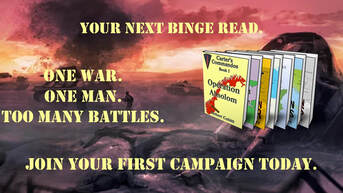 Immediately some of you will be saying “I can’t afford that.” To which I will reply “Can you afford not to sell any books?” If your books aren’t selling, then doing nothing is not an option. Einstein defined insanity as doing the same thing over and over again and expecting different results each time. I’ll put it a slightly different way: If you always do what you always did, you’ll always get what you always got. If you want a different outcome, you have to do something different. That applies to life in general, of course, but this isn’t a philosophical blog. Just be assured that if your books aren’t selling using whatever methods you are using now, they will continue not to sell unless you change your methods. And what you do has to be within both your ability and your control. Unless you want to contract an expensive marketing agency to promote your book, you have to do whatever it is within your power to do. "I know you don’t want to hear this but, by itself, using social media for free is never going to turn anyone into a successful indie author." One of the ways you can do that is to change your post’s images and messages at regular intervals. And to do that you need the right tools. I will admit that there is an element of risk involved here. You may spend money on buying an app to help you create more or better images and you may not increase your book’s sales at the end of it. But, on the upside, if it works and you sell more books, your investment will repay you, because you can use those apps time and again to create more and more new images. But rest assured, if you don’t spend the money, nothing will happen anyway. Success doesn’t come for free, as any indie author who is selling a lot of books will tell you. We are selling quite a lot of books because we are spending money. We aren’t a big business so we can’t afford to spend much. But if we didn’t spend anything, we wouldn’t sell enough books to cover our day-to-day running costs. I know you don’t want to hear this but, by itself, using social media for free is never going to turn anyone into a successful indie author. If you have enjoyed this blog, or found it informative, then make sure you don’t miss future editions. Just click on the button below to sign up for our newsletter. We’ll even send you a free ebook for doing so. Disclaimer: We are not connected with Kindlepreneur in any way and have no financial interest in the product reviewed in this blog. This review has not been paid for by Kindlepreneur, Dave Chesson, or anyone else.  Not the real product's logo! Not the real product's logo! Let me make it clear up front, if you only have one book published and never intend publishing another, you aren’t doing much marketing and you don’t intend paying for marketing, this product may not be of much use to you. But if you intend having a lengthy career as a self-published author, if you are planning to publish a series, or if you are a small, independent publishing house like us, then there is probably something here to interest you. Warning: This is a lengthy blog because for authors and publishers to understand the value of the product we are reviewing, they also have to understand the need for it. What need do you have that this product satisfies? You may not even know you have that need until you read this blog. Publisher Rocket is an aid to marketing and an aid to advertising using Amazon Ads and other advertising platforms. One of the things every publisher (I include self-published authors in that) has to know is which keywords to include in their book’s description in order for it to attract the attention of readers when they are looking for something new to read.  If you have ever uploaded a book onto KDP, you will know that you are allowed to enter 7 “keywords” into your book’s details. Actually, you can use more than 7 words, because you can enter “strings” of words. For example, you don’t have to limit yourself to “romance” as a keyword, you can enter “modern romance” instead and it will still only count as one keyword. When readers are searching for books to read they may use Google, other search engines, or the search bars of retail sites such as Amazon. Very often they don’t know exactly what they are looking for, so they can’t enter a title or an author’s name. Instead, they enter a word or string of words that describes (for them) the type of book they want. For example, as a fan of historical fiction, I may do a search using those two words. Or I might add “military” to the description because I like historical fiction set around military themes. Or I might use “World War II” as my search term. "they are wasting one of the 7 keywords that KDP allows them." If the author knows what search words the readers are using, they can make sure those words are included in their 7 keywords for their book’s description on KDP, so they are guaranteed to be found when a search is done, and the book will appear in the search results - though not necessarily near the top of the list. But authors also need to know which words not to include; the words that readers rarely use for searches. If the author uses them, then they are wasting one of the 7 keywords that KDP allows them. 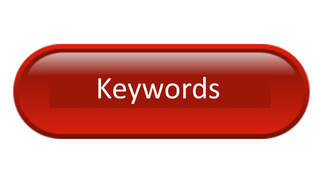 The problem is, identifying which words the readers are using. It may not be the ones we think they are. You may think I’m talking about “Search Engine Optimisation” (SEO) and you are dead right – I am. Only we don’t need to use a fancy term like that, and we certainly don’t need to pay someone to do that for us. Manual targeting on Amazon Ads is the most cost efficient way of using that advertising platform. But it relies heavily on the advertiser (you) knowing how to get the best out it. 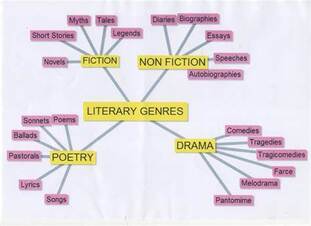 So many genres - but which one is the best fit for your book? So many genres - but which one is the best fit for your book? The first type of manual targeting uses your book’s genre. Anyone who buys books in the same genre will have your book in their “recommendations”. Amazon Ads suggests the genres and you can delete any that you don’t think really apply. For example, Amazon Ads may suggest both modern and historical romance for your book, but your book can’t be both, so you can delete the one that doesn’t apply. But you can also insert your own genres. For example, if yours is a fantasy book with a strong romantic sub-plot, you don’t have to limit your advertising to the fantasy genre. You can add romance genres too. Do you know which genre listing on Amazon is going to be the best for your book? Some are better than others for getting your book seen and, according to Publishing Rocket’s publicity video, there are “hidden” genres too. For some genres you can even get to the number 1 bestseller spot by selling only a handful of copies. That is useful stuff to know – but how do you find out which genre(s) you should be advertising to? Read on to find out. By the way, did you know that you aren’t limited to just 2 genres on KDP? That only applies when you first upload your book. Once it is published, you can select up to 7. You need an account on Author Central and then you need to go to Help>Contact>Amazon Store & Detail Page>Contact us>Amazon Book Page>Update Amazon Categories. 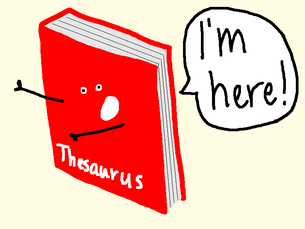 The second type of manual targeting uses keywords. Amazon Ads tutorials suggest using between 100 and 150 keywords (or keywords strings) in an ad such as this. If you struggled to come up with 7 keywords for your book, how are you going to come up with 100-150? Well, using author names and the titles of similar books is one way. But whose books and which titles? Which is where Publisher Rocket comes in. OK, it took a long time to get here, but if you don’t understand the basics of Amazon (or other platform) advertising, you aren’t going to understand the value of this product. What Publisher Rocket does is gather together the search terms that are used on Amazon and presents them to you for your consideration. But it also does much more than that. It also provides data which tells you which of those terms is best at turning advert “clicks” into sales. "Publisher Rocket helps to sort the wheat from the chaff"  Not all search words are equal, you see. Sometimes the reader enters fairly random words into the search bar and therefore the results they get back don’t provide them with what they are looking for, so they have to have another go. But if the reader clicks on a book out of curiosity, those random search words still appear as results, so it is essential to know that they aren’t that useful, so as to exclude them. Publisher Rocket helps to sort the wheat from the chaff by providing the user with a wide range of data that they can download into a spreadsheet to filter and sort to their heart’s content to answer the vital keyword questions they may have. The one thing they don’t want to do is pay for clicks on their ad which won’t be converted into sales. Just because they and Isaac Asimov both write sci-fi, it doesn’t mean that their readers and Isaac Asimov’s readers like the same sort of books. They may want to exclude that name as a keyword for that reason, so that they don’t pay for clicks from curious Isaac Asimov readers who aren’t going to buy their books.  OK, if that sounds complicated, that may be something for just the real data nerds to get into. For the rest of us, Publisher Rocket provides us with some simpler tools to use to find words that are good to use for our books, by genre, and what aren’t so good. Using the app is easy enough, but Publisher Rocket’s owners make it even easier by providing “how to” webinars to guide you through the various functions and offer advice on how to get the best results. The owner of Publisher Rocket is a company called Kindlepreneur, a company created by self-made Kindle millionaire Dave Chesson. This isn’t their only product, but it is the one we have found to be most useful in helping us to increase the efficiency of our advertising campaigns. If you saw our blog last week (see below the end of this blog), you will know that this is something we have been focusing on in recent months and it has paid off for us. Publisher Rocket costs $97 (around £85) for a lifetime subscription, which is why it may not be suitable for people who only ever plan to publish one book and who don’t intend getting into marketing. In other words, it isn’t any use to an author who doesn’t want their book to be read. Those that do want their books to be read may find it more useful. "As a publisher this was a no brainer for us" But even if you only have one book, the purchase price could be paid back quite quickly (it is the equivalent to approximately 50 extra sales) if you use the results to improve your advertising efficiency. As a publisher this was a no brainer for us. We bought Publisher Rocket in November last year and it had paid for itself by Christmas. We don’t use it every day, but when we do use it we know we are going to get the most bangs for our buck out of our advertising. So, if you need some help with your Amazon Ads, this product may be just the thing and we are happy to recommend it. If you want to know more about the product, click here. If you have enjoyed this blog, or found it informative, then make sure you don’t miss future editions. Just click on the button below to sign up for our newsletter. We’ll even send you a free ebook for doing so. Disclaimer: We are not connected with Bryan Cohen in any way and have no financial interest in his book. This review has not been paid for by Bryan Cohen or anyone else. 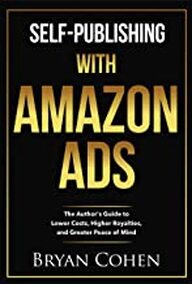 This book probably represents the best £3.99 I have ever spent since I started publishing. That is because it’s a book that actually paid for itself several times over. I would go so far as to say I wish I had read it 5 years ago, as it would have saved me a lot of time and money. That isn’t actually possible, as the book was only published this year, but you know what I mean. This article will be half book review and half blog. The blog part tells you what happened when we tried to apply the ideas and methods that Bryan Cohen recommends in “Self-Publishing With Amazon Ads”. Some of you may just want to know how that worked out, so that bit is at the end of the article. "You’ll have to find out the hard way that there is no such thing as “instant gratification” when it comes to marketing a book." If you are still reading this now, and haven’t scrolled down to find out what happened, you have one of the key qualities that Bryan Cohen talks about in the book: patience. Cohen doesn’t promise instant results. One of the first things you will learn from this book is that generating consistent results from Amazon advertising is a marathon not a sprint, and if you aren’t prepared to be patient then this may not be the book for you. You’ll have to find out the hard way that there is no such thing as “instant gratification” when it comes to marketing a book. If you have never used Amazon Ads, or you have only just dipped your toe in the water, then you will be at a bit of a disadvantage, as Cohen assumes some prior knowledge. But don’t worry. That prior knowledge is available. Amazon Ads provides webinars for its new users here. "helping authors to reduce the amount of money they spend while also getting better results" A word of caution about the webinar. It is aimed at encouraging you to spend money with Amazon Ads. After all, Amazon Ads is a business and it makes its profits from its users, so the more money users spend with them, the more profit Amazon makes. Bryan Cohen’s book, however, is aimed at helping authors to reduce the amount of money they spend while also getting better results. This means that some of Cohen’s advice on bidding strategies contradicts that of the webinar. And if you are wondering what a bidding strategy is, it means that you need to do the webinar before you dive into this book. Just a quick word about the author. He is a self-published author himself and he also provides self-publishing training and other services for authors through his website Best Page Forward. But not all the training he provides has to be paid for. Each quarter he hosts the 5 Day Amazon Ads Profit Challenge, which is free to join and which has provided coaching for over 25,000 authors. "She challenges Cohen at every turn" Each chapter in the book takes the reader through a different phase of a process that starts with poorly performing ads and progresses to turning those ads into high performing ones. Each chapter therefore introduces a new idea or method, so if you try to skip ahead to the “good bit”, where you are making millions, you are likely to miss out on a vital step which means your objective won’t be realised. See, once again you have to be patient. Just something to note. Early in the book Cohen talks about creating 5-10 ads a week. This is for the benefit of American readers, because Amazon.com allows readers to create customised ads and advertisers are encouraged to create several different customised ads a week to appeal to different segments of the market. That facility doesn’t exist for users of other Amazon markets (yet). For us, the Amazon page for our book is our ad. That is actually a timesaver for us, because one ad can run forever. However, the rest of what Bryan talks about is completely valid and if we ever get access to the customisation function, we'll be ready for it because we've read this book. Each chapter is broken down into two parts. One part is a “fly-on-the-wall” view of an on-line coaching session with one of Bryan’s clients, a woman called Erin. The other part is Bryan speaking directly to the reader to explain what he is teaching Erin. I don’t know if Erin is a real person or a composite character created for the reader’s benefit, but she is the person who asks the questions that the reader might want to ask. She comes to the course as a sceptic and has to be shown that the process works by actually implementing the methods herself so that she can see the profits from her ads increasing over time. And Erin isn’t a passive student. She challenges Cohen at every turn, especially on the issue of how long it will take to see returns and how she is going to fit in the time to do what he recommends. Because, as with all things, time is one of the most valuable resources we have and, as writers, we’d rather be spending our time writing than marketing. But Cohen is ahead of Erin here as well and there are specific sections on time management. "only a handful of people will ever achieve 6 digit profits" One of the things I liked about the book is that it is grounded in realism. When Cohen talks about increasing royalties and profits (not the same thing, as you will find out if you buy the book), he doesn’t promise telephone number sized amounts of money. He talks about investing $50 dollar a month to make $100 profit, which gives a feeling of being achievable. He then talks about increasing that profit to $200, $500 and maybe $1,000. He does refer to people who have made considerably more, but he tempers that with the realism that maybe only a handful of people will ever achieve 6 digit profits – but you get a warm feeling from knowing that, by doing a bit of work, you could be in that handful. Cohen is just as realistic about how much time we have available to do the work. He knows we have day jobs, families to look after and writing careers to pursue, so he tries to optimise the amount of work we may have to do in order to make best use of the time we have available. Time management is a key message. Readers of this blog will notice that I have only given the book 4 stars and therefore I had some reservations about it. That is true, but the reservations aren’t about the lessons that Cohen teaches, they are more about the way they are presented. For a start, Cohen refers to some calculations you may want to do in order to produce some performance data. Some worked examples would be very helpful to understand what he is talking about, but they are lacking. "bombarded with a whole lot of data" There are no handy graphics, such as screen shots of Amazon Ads pages, where things can be pointed out. While I am quite good with the internet, there are features I miss on web pages and some key features aren’t always the most prominently displayed. A graphic pointing out “This is the button you need to click” and “This is where you have to alter x” would be really helpful. The other thing I had a problem with is the additional applications that you might want to use, especially those relating to generating lists of keywords (If you don’t know what a keyword is, then see above regarding the Amazon Ads webinar). One of the applications has to be purchased (about £100) and comes with its own training videos, so that’s OK (it isn’t essential and you don’t have to buy it, but it is a useful tool and we will review it next week). But the other two are plug ins for Google Chrome, which are free and come with neither a user guide nor helpful training videos. I tried using them and was bombarded with a whole lot of data which I struggled to interpret. Some guidance on how to interpret the data produced by those plug-ins (with accompanying graphics), so that I could use it in ads, would have been really useful. But don’t let those three things put you off buying this book. Firstly, with a bit of patience (again) I found the buttons I needed to click and the things I needed to adjust. And, with some trial and error, I did work out how to interpret the data produced by the plug-ins. But it took time that I hadn’t factored in and which I had to divert from other activities. "while we were doing a lot of things right, we were also doing quite a few things wrong" So, how did we get on? The first thing you need to know is that here at Selfishgenie we aren’t complete novices. We have been running Amazon Ads for many years, with mixed results. From articles I had read on various websites I found out that advertising with Amazon wasn’t a quick fix. We would need to spend more money than we had in the past and let our ads run for longer if we wanted them to be successful. So, around April 2022 (before we bought this book) we decided to commit some of our sales revenue to improving our advertising, as an investment to make more revenue in the future. And it worked. We launched an ad campaign for our Carter’s Commandos series and saw our monthly royalties increase from the low three digit level per month to a four digit level by October, which we were able to maintain. But the amount of money we were spending to get that revenue seemed to be higher than it needed to be. In terms of profit on the campaign (the net amount we made from each sale compared to the gross amount we spent), we felt sure we should be doing better. That was when I stumbled across Bryan Cohen’s book. Actually, I did a search looking for blogs about using Amazon Ads and it appeared in the search results. It didn’t take long to discover that while we were doing a lot of things right, we were also doing quite a few things wrong. In particular, our bidding strategy was wrong. We thought we could buy sales by spending more money. In fact, all we were doing was giving Amazon more money than we needed to, which was reducing the profit from the sales we did make. "give away Bryan’s secrets for free" The way Amazon’s advertising algorithms work mean that bid price is only one factor in getting our ads seen. I won’t steal Bryan Cohen’s thunder (or reduce his books sales) by telling you what the other variables in the algorithms are. (I know, but it wouldn’t be fair to give away Bryan’s secrets for free). I won’t bore you with all the details of what we did. Suffice to say that we learnt the lessons that Bryan Cohen was trying to teach us.  But what we did do was to run a trial to see how his methods compared to our own. We continued to advertise our Carter’s Commandos series the way we always had. But our Magi sci-fi series had been bumping along the bottom, making very few sales per month. So, we started a brand new ad campaign for the first book in that series and applied the newly learnt lessons to that series to see what happened. NB. When I refer to "sales" below I also mean KindleUnlimited (KENP) pages read. 1st 30 Days The good news is that we got clicks on our ads from Day 1 and we made more sales than in the previous 3 months, but they weren’t Earth shatteringly good. The campaign wasn’t profitable, meaning we spent more than we received in Royalties. We tweaked the book’s blurb (see last week’s review of “Fiction Blurbs: The Best Page Forward Way”), but there wasn’t much else we could do to stimulate more sales during that period. 2nd 30 Days Here we started to reap the benefit of “delayed results”. It is said that buyers have to see an ad an average of 7 times before they respond. This seemed to be the case as the number of clicks on our ads increased the longer the ad ran and we started to see more sales. But we also started to see sales for books we hadn’t advertised. The Magi is a 9 book series, and we were only advertising Book 1. But we started to get sales for books 2 – 9, which we hadn’t advertised. Our original ad was instrumental in developing a “fan base” for the series. These additional sales meant we were now in profit. Final 30 days I’d be lying if I told you that sales really started to take off. But they did continue even if they were unspectacular. There seems to be some sales resistance to The Magi series which we aren’t getting for other series, and we need to dig into that to see if we can work out what is causing it. The final 30 days of the trial was also during January, when money is traditionally tight for people - even avid readers of sci-fi. However, we have sold more copies of titles in The Magi series in the last 90 days than we did in the previous 9 months and the campaign is showing a profit, so overall we count it as a success. "highly recommended" So, what are the main take-aways we have from the book? 1. This isn’t a quick fix. We required patience and strong nerves to spend money without seeing a profit for several weeks. 2. If we are doing a “category ad” (advertising by genre), we needed to keep the band narrow so as not to waste money on genres that aren’t relevant and where our ad may generate a click (which we pay for) but won’t get converted into a sale. 3. We needed to use more keywords in our ads and we had to make them relevant to the genre of books we were selling. The Magi series is “space opera”, so there is no point in using keywords that relate to dystopian sci-fi. Again, they may generate clicks, but they won’t get converted into sales. 4. We needed to use the data from the ad campaigns to help reduce our costs. For example, we were getting hundreds of clicks for one keyword, generating cost, but the clicks didn’t convert to sales. Conclusion: readers who use that keyword aren’t interested in our book. So, we deleted the keyword from the list. 5. It works!  Having learnt from this experience, we have now tweaked our ad for Carter's Commandos, to take into account what we now know we can do better, which hasn't increased our sales but has reduced our costs, so we are actually keeping more of our money, which is a win, which makes us happy. If you are an Indie author or a small publisher (like us) then “Self-Publishing With Amazon Ads” by Bryan Cohen is highly recommended. To find out more about the book, just click or tap on the cover image at the top of the blog. If you have enjoyed this blog, or found it informative, then make sure you don’t miss future editions. Just click on the button below to sign up for our newsletter. We’ll even send you a free ebook for doing so. |
AuthorThis blog is compiled and curated by the Selfishgenie publishing team. Archives
June 2025
|

 RSS Feed
RSS Feed